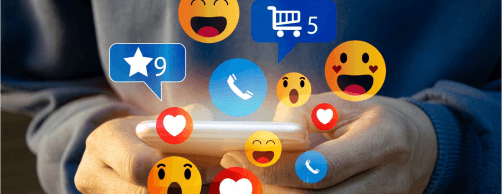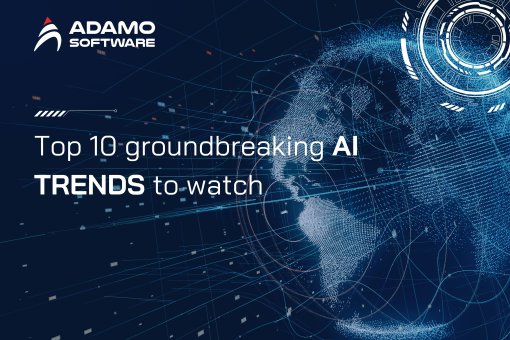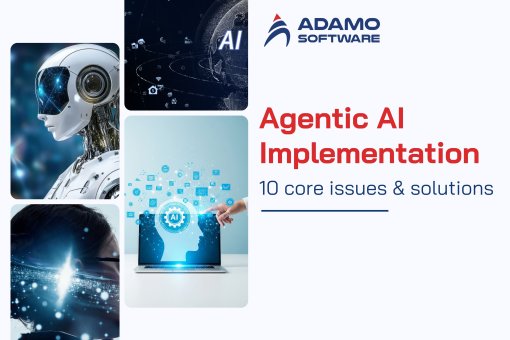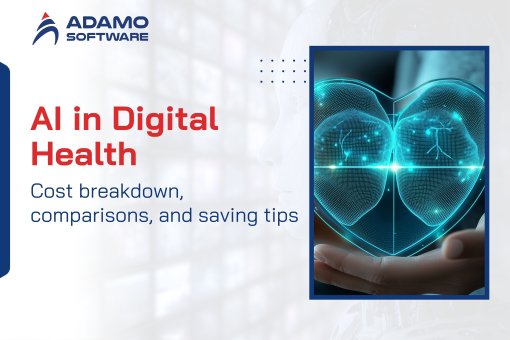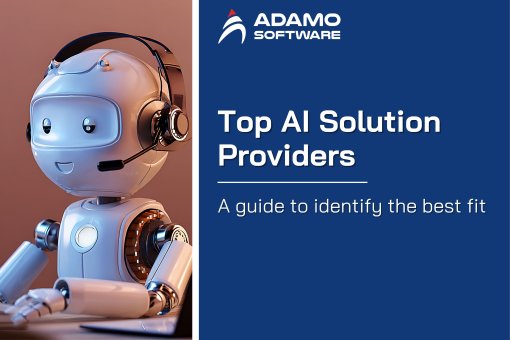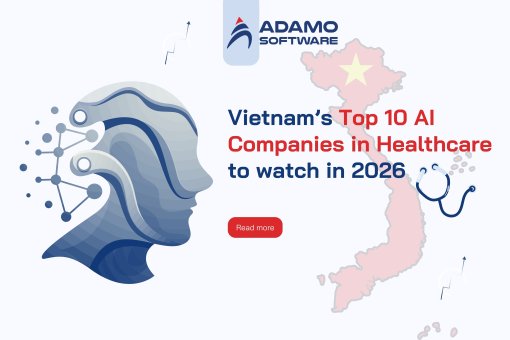AI in Remote Patient Monitoring: Opportunities and Challenges in healthcare
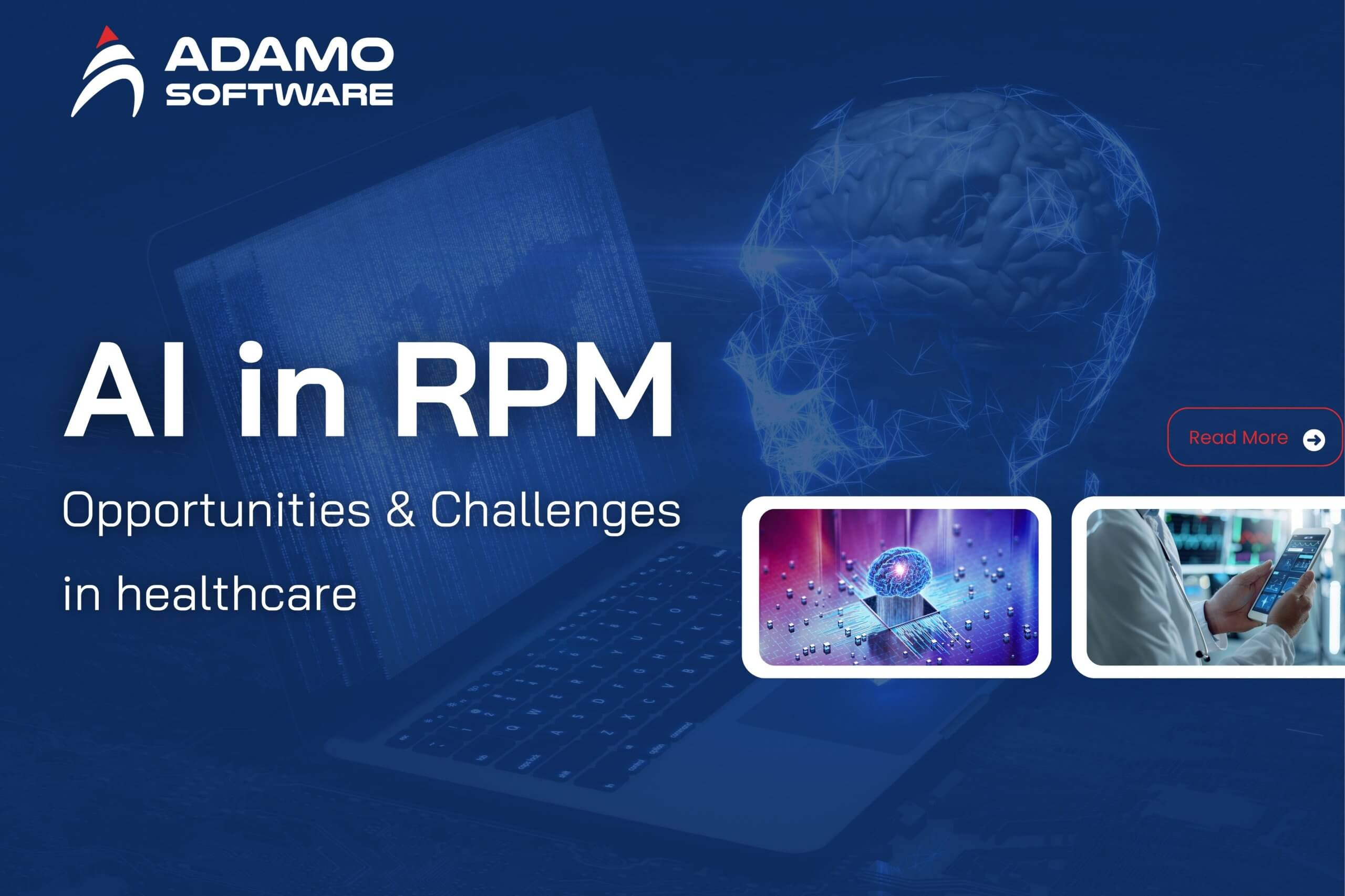
Healthcare facilities are now adopting AI in remote patient monitoring for the best result and operation efficiency. Let’s learn about this adoption with Adamo Software!
Currently, remote treatment has become popular, changing the way the healthcare industry works. Healthcare facilities are now adopting AI in remote patient monitoring for the best result and operation efficiency. Telehealth and AI are transforming remote patient care, making it more efficient, personal, and accessible. This leads to improved outcomes, lower costs, and new ways to engage patients. Let’s learn about the adoption of AI in remote patient monitoring with Adamo Software!
Through this blog post, you will find the following pieces of information.
- What is AI in Remote Patient Monitoring?
- Applications of AI-driven Remote Patient Monitoring
- Challenges of AI-powered RPM
All information has been thoroughly researched and updated to the latest trends. So, let’s read our blog post and find some useful information!
I. What is AI in Remote Patient Monitoring?
AI in remote patient monitoring is the adoption of AI in collecting, analyzing, and predicting patient health data. This technology allows the healthcare staff to continuously monitor biological indicators through wearables, sensors or medical applications. Thanks to AI, the healthcare facilities’ system can detect early signs of abnormalities and alert doctors or patients, helping to improve treatment efficiency and manage chronic diseases and acute conditions better.
The AI-powered remote patient monitoring can be applied in many fields of the healthcare industry. One of the outstanding examples is the use of AI in remote patient monitoring to manage diabetes patients. Wearable devices record real-time blood sugar levels and AI analyzes trends and predicts the risk. For cardiovascular patients, AI can monitor heart rate, blood pressure and detect abnormal rhythms. Additionally, AI algorithms are also applied to chronic obstructive pulmonary disease patients to detect severe shortness of breath early. These timely alerts help prevent complications and reduce hospital admissions.
Diseases such as asthma, heart attacks, strokes, pneumonia, and pulmonary embolisms all have high mortality rates if not detected early. AI in remote patient monitoring helps identify danger signs at an early stage, such as slight changes in breathing, heart rate, or blood oxygen levels. Timely warnings can significantly reduce the risk of death.
Generally, AI in remote patient monitoring offers the potential to detect danger signs early, allowing for timely intervention and reducing mortality. This technology plays a vital role in proactive healthcare, especially for serious conditions such as cardiovascular, respiratory and stroke.
II. Applications of AI-driven Remote Patient Monitoring
As mentioned, AI can be used in diabetes management, heart rate monitoring, blood pressure detection, etc. However, they are not all things that AI in remote patient monitoring can deal with. Let Adamo Software discuss some notable applications of AI-driven remote patient monitoring. They include the below capabilities.
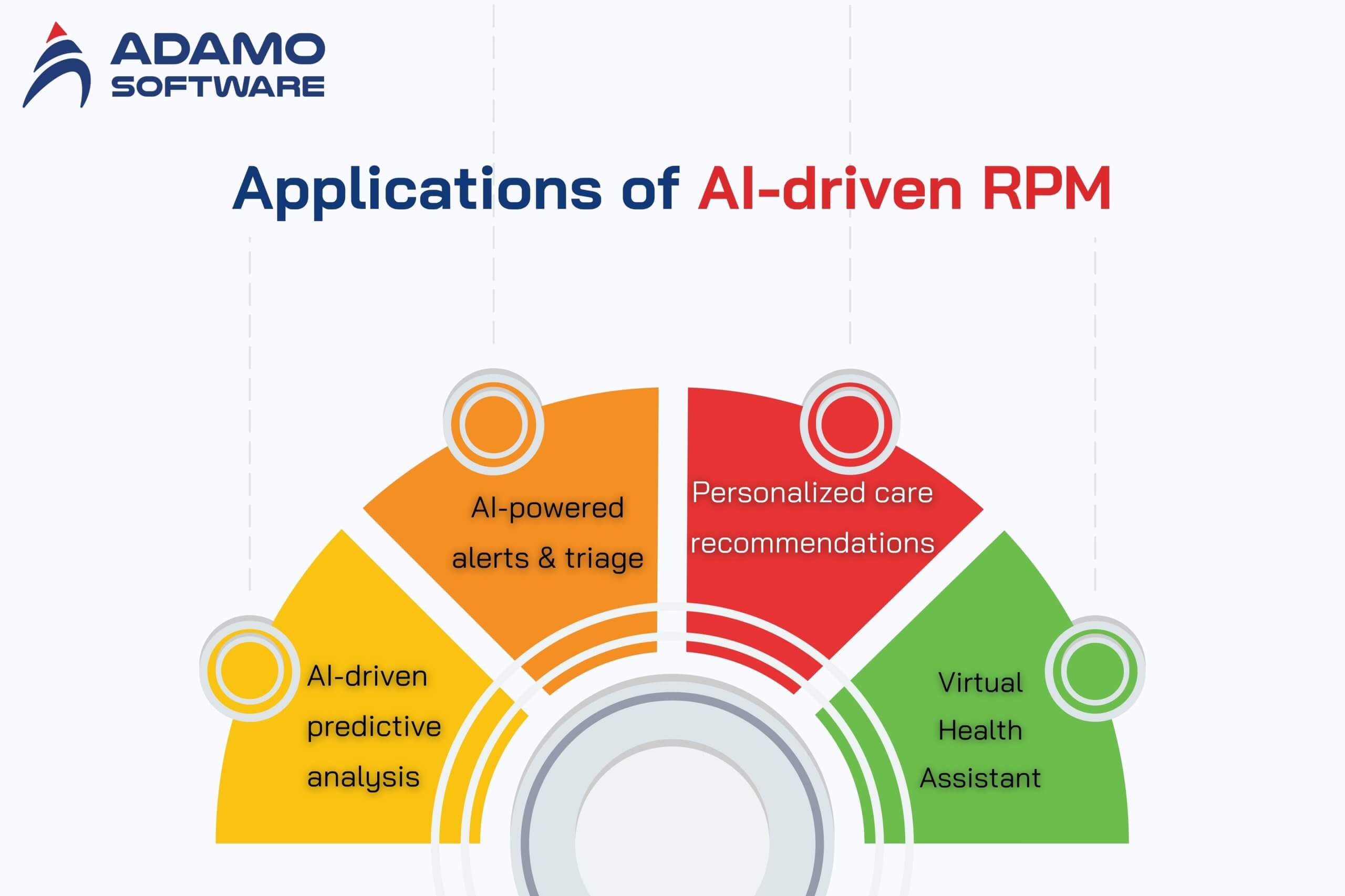
- AI-Driven Predictive Analytics: Proactive health monitoring and optimized resource allocation in healthcare
- AI-Powered Alerts and Triage: Real-time updates and self-adjusting thresholds
- Personalized Care Recommendations: Individualized care plans and AI-powered guidance
- Virtual Health Assistant for Recovery and Wellness: Virtual physical therapy and mental wellness support
Let’s delve into each application with Adamo Software!
AI-Driven Predictive Analytics
AI in remote patient monitoring can be adopted for predictive analytics. You can use this technology for predicting and preventing health issues. Machine learning models analyze patients’ vital signs and other health data, identifying patterns that can signal a coming issue, such as worsening heart failure or a recurring infection, before symptoms are even noticeable.
This proactive approach allows doctors to intervene earlier, preventing complications and improving patient outcomes. It also helps avoid costly and stressful emergency hospital visits. Ultimately, AI’s ability to detect issues early enhances the quality of care while making the healthcare system more efficient.
Besides early detection of health issues, AI in remote patient monitoring also helps healthcare facilities to allocate resources. AI can identify patients at higher risk, allowing healthcare teams to prioritize resources and provide more focused care. This not only improves efficiency but also helps prevent complications.
Generally, with AI in remote patient monitoring technology, machine learning models can analyze health data to detect early signs of health deterioration, helping doctors intervene promptly and avoid dangerous complications. In addition, AI in remote patient monitoring also helps medical facilities allocate resources more effectively by identifying high-risk patients, thereby improving the quality of care and reducing unnecessary costs.
AI-Powered Alerts and Triage
AI-powered alerts and triage is also an adoption of AI in remote patient monitoring. AI triggers alerts for clinicians when patient data crosses specific, customized thresholds. The immediate feedback helps care teams intervene more quickly, which is especially crucial for patients with complex or unstable conditions. This helps to reduce the risk of emergencies and ensures that patients are always closely monitored, resulting in significantly improved quality of care and patient safety.
Unlike static RPM alerts, AI uses machine learning to establish individual patient baselines, allowing it to dynamically adjust alert thresholds. This approach reduces false alarms, making sure that every alert is clinically significant. Thanks to this, the system can help the medical team focus on the cases that are truly necessary, optimizing care time and resources.
Personalized Care Recommendations
When you adopt AI in remote patient monitoring, you can recommend personalized care for patients. Based on a patient’s individual history, lifestyle, and real-time RPM data, AI can create personalized care plans. These insights can be continuously refined, leading to even better patient outcomes over time. This makes treatment more personalized to each individual, rather than a one-size-fits-all approach. By continuously learning and adapting, AI helps build more predictive and proactive care strategies.
AI-driven chatbots or digital assistants give patients constant support and guidance. By analyzing current metrics, these systems are able to offer personalized suggestions on medication compliance, dietary adjustments, and exercise regimes that are specific to a patient’s condition. This makes it easier for patients to maintain healthy habits and adhere to treatment regimens. Simultaneously, the ongoing support from AI can reduce patients’ reliance on in-person visits.
Ready to Outsource?
Get top-tier IT talent without the hassle. Contact us now!
Virtual Health Assistant for Recovery and Wellness
AI in remote patient monitoring technology can be adopted for remote rehabilitation and chronic disease management. For virtual physical therapy, AI-driven platforms can help patients with post-operative or chronic musculoskeletal conditions recover more effectively at home by guiding them through exercises and tracking their compliance with motion sensors. Thanks to motion tracking sensors, the system can assess the accuracy of each movement and provide immediate feedback. This helps patients recover faster, reduces errors during training and reduces the risk of re-injury.
By analyzing data from wearable devices, AI can detect subtle changes in a patient’s mood or routine, helping to identify mental health declines or stress markers. This allows clinicians to intervene with timely mental health support. Thanks to this, psychological problems can be detected early before they become serious. This not only improves the patient’s mental health, but also contributes to improving the quality of life and reducing the risk of relapse.
Overall, some of the prominent applications of AI in remote patient monitoring focus on improving healthcare efficiency and optimizing treatment processes. These solutions include AI-powered predictive analytics for proactive health monitoring and resource allocation, intelligent alerting and prioritization with self-adjusting alert thresholds, personalized care recommendations based on real-world data, and virtual health assistants that support recovery and well-being. Through this combination, AI not only improves the quality of care but also provides a more comprehensive and proactive healthcare experience for patients.
Also read:
AI in Diagnostic Imaging: Benefits, challenges, and clinical applications
AI in personalized medicine: Key Benefits and Use Cases
III. Challenges of AI-powered RPM
While the AI in remote patient monitoring technology is extremely beneficial to healthcare facilities and patients, it faces many obstacles. Despite its explosive growth, AI in remote patient monitoring is still far from being widely adopted across healthcare. A poll conducted by the Medical Group Management Association in June 2022 indicated that RPM was offered by only 25% of the responding practices. Below are some outstanding challenges of AI-powered RPM that you may want to note.

- Data privacy and security: Maintaining patient trust and complying with regulations
- Data quality and interoperability: Ensuring seamless data exchange and accurate insights
- Algorithm transparency and interpretability: Ensuring reliability and avoiding potential biases
- Ethical considerations: Making sure that AI is ethically and responsibly used
- Integration with existing workflows: Seamlessly integrating without disrupting workflow
- Regulatory compliance: Ensuring patient safety and legal compliance
- Adoption and acceptance: Building clinician trust
Let’s delve into each challenge with Adamo Software!
Data privacy and security
Data privacy and security is one of the notable challenges you should consider when adopting AI in remote patient monitoring. AI in remote patient monitoring requires access to a high volume of sensitive patient health information. Thus, strong security and privacy measures are essential.
Protecting the privacy and security of the data is crucial for maintaining patient trust and complying with regulations like HIPAA. You may want to implement robust security measures, encryption, and access controls to protect patient data.
Data quality and interoperability
When adopting AI in remote patient monitoring, it is also important to focus on data quality and interoperability. AI algorithms need high-quality, standardized data to produce accurate insights. Integrating AI into RPM systems necessitates resolving issues related to data quality, such as incomplete or missing data, inconsistencies, and integration complexities.
Additionally, ensuring interoperability between various systems and devices is essential for a seamless data exchange. This allows healthcare facilities to share health information across platforms in a timely manner, avoiding data fragmentation. Besides, doctors and health systems can collaborate more effectively, ensuring continuity in patient care.
Algorithm transparency and interpretability
AI algorithms in RPM systems must be transparent and understandable so healthcare professionals and patients can trust them. It is crucial to understand how AI models make predictions and recommendations to ensure they are reliable and don’t contain biases or errors.
In addition, you may want to establish regular auditing and monitoring mechanisms to ensure that algorithms are working as intended and comply with medical standards. Training medical staff on how to use and interpret AI results is also important, helping to increase transparency and trust.
Ethical considerations
The integration of AI in remote patient monitoring presents several ethical considerations, such as the responsible application of AI, potential algorithmic biases, and its influence on patient-doctor relationships. It is imperative to ensure the ethical and responsible use of AI through proper oversight and accountability.
Another ethical aspect related to the use of AI in remote patient monitoring is the equity in healthcare. If AI systems are trained on data that is not diverse, they can introduce bias, leading to some groups of patients receiving less accurate recommendations. Thus, it is crucial to develop algorithms that are transparent, fair, and tested on a variety of populations to avoid discrimination in healthcare.
Integration with existing workflows
The integration of AI in remote patient monitoring systems necessitates careful consideration of existing healthcare workflows. AI must integrate seamlessly into healthcare professionals’ daily routines, delivering actionable insights without disrupting their workflows or imposing additional burdens.
To achieve this, AI systems need to be designed with user-friendly interfaces that are easy to use and compatible with existing electronic medical record management platforms. Training healthcare workers on how to use AI tools is also important, helping them feel supported.
Regulatory compliance
Because healthcare is a highly regulated industry, integrating AI in remote patient monitoring systems means you must comply with various regulations and standards. To ensure patient safety and legal compliance, it’s crucial to adhere to regulations like HIPAA, FDA guidelines, and data protection laws.
In addition to complying with current regulations, developers and healthcare organizations need to proactively update changes in legal policies to avoid the risk of violations. Additionally, it is necessary to maintain a continuous monitoring mechanism to promptly detect and fix problems arising during operations, maintaining legality and patient safety.
Adoption and acceptance
For AI to be successfully integrated into RPM systems, healthcare professionals must endorse and adopt it. By implementing proper training, education, and change management strategies, you can ensure healthcare professionals understand AI’s benefits and feel comfortable using it.
Overall, the challenges facing AI-powered RPM are systemic in many cases. These challenges can largely be solved by partnering with a reliable technical expert who can guide you through the fast-evolving healthcare technology landscape.
IV. Final thoughts

In conclusion, the adoption of AI in remote patient monitoring brings the ability to detect early, personalize treatment, and optimize healthcare resources. This technology not only helps improve the quality of care but also improves the patient experience through continuous and proactive support.
However, to successfully implement it, it is needed to address challenges related to system integration, ensuring algorithmic transparency, complying with legal regulations, and maintaining ethical standards. When applied properly, AI will become a powerful tool to help build a smart, sustainable, and patient-centered healthcare system.
If you are looking for a partner to help you successfully integrate AI in remote patient monitoring technology into your existing system, Adamo Software can be your ideal choice. Here’s how Adamo Software, one of Vietnam’s leading technology companies, can help.
- Developing a custom platform to ensure AI integrates seamlessly with your existing electronic medical record (EMR/EHR) system
- Designing a user-friendly interface that is easy for healthcare teams to use without disrupting workflows
- Building an AI-based predictive and data analytics solution that provides intelligent alerts and timely treatment recommendations
- Ensuring compliance with medical and legal standards such as HIPAA, GDPR, and other healthcare data privacy regulations
- Implementing advanced security mechanisms and data governance systems to protect privacy and maintain patient information security
Still hesitating whether to choose Adamo Software? Let’s contact us for more detailed information!
V. FAQs
How does AI make my health monitor smarter?
With AI, remote patient monitoring (RPM) becomes a predictive engine. AI learns your health baseline and finds subtle patterns in your vitals that a human might miss. It can then predict potential health issues, such as a cardiac event or a COPD flare-up, long before they become emergencies.
Does remote monitoring reduce hospital visits?
Yes, AI in remote patient monitoring can help patients reduce hospital visits. AI-powered RPM allows for early interventions, which helps prevent complications.
How does AI identify which patients are high-risk?
Through a process called dynamic risk stratification, AI synthesizes a wide range of data, including your electronic health records (EHRs), lab results, genetics, and real-time data from wearables, to build a complete risk profile. This profile is continuously updated, allowing healthcare teams to identify patients who need immediate attention and proactively allocate resources to prevent negative health events.
What is the financial benefit of using AI in remote patient monitoring?
For healthcare systems, the cost savings are substantial. Studies show that RPM can reduce healthcare expenses by up to $8,000 per patient annually. A healthcare system that used AI to reduce readmissions successfully retained $7.2 million in at-risk funding. These savings come from reduced hospitalizations and emergency room visits, and better use of clinical resources.
How does AI help patients remember to take their medicine?
AI provides personalized support for medication adherence, doing more than just sending simple reminders. It can use smart pill dispensers to alert you and your caregivers if a dose is missed. AI-enabled cameras can even verify if a patient has taken their medication. Furthermore, AI-powered chatbots can offer personalized guidance on diet and exercise, using behavioral insights to help you stick to your treatment plan.




